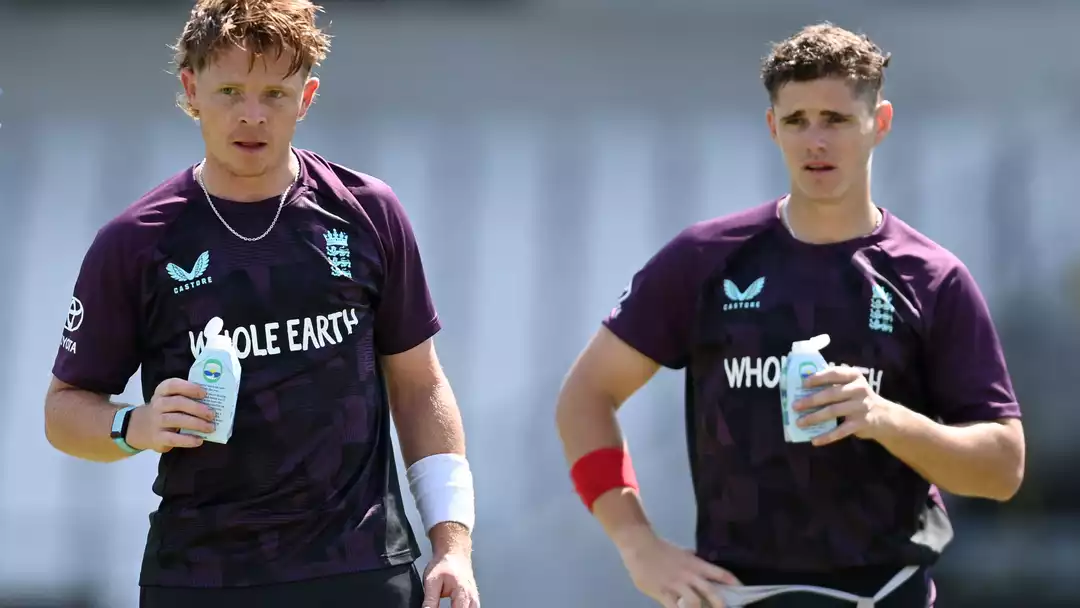The importance of the No.3 spot in Test cricket has long been debated, especially in the case of England’s batting line-ups over the years. From greats like David Gower and Mark Butcher to modern stalwarts like Jonathan Trott and Nick Compton, the pressure and responsibility of that crucial position have always weighed heavily on its occupant. This is not just a spot where runs are expected but where the balance of the team often rests, particularly when the openers have failed, and the middle-order must take charge.
In the recent past, England’s top-order has been marked by inconsistency. The situation at No.3 has been a topic of discussion as selectors face an ongoing challenge of finding the right balance for their Test squad. While the batting at the top is a focal point for many, the role of No.3 has often become a battleground for change, as selectors attempt to stabilise a fragile top order.
England’s No.3 Selection Woes: A Historical Perspective
In August 2009, England’s Test team faced a dilemma that still resonates in modern cricket discussions. The Ashes series was level at 1-1, and England went into the final Test at The Oval with a selection crisis. Batting at No.3 was Ravi Bopara, a player whose Ashes series had been nothing short of disastrous. In the first two Tests, Bopara had managed only 105 runs at a dismal average of 15. His series was capped off by a first-ball duck at Headingley during a heavy defeat, leading to widespread questions about his position in the team.
In the days leading up to the Oval Test, England’s selectors faced a classic selection dilemma: Bopara had to go, but who should replace him? The options seemed slim. In the era before England’s more extensive player pool, the selectors toyed with ideas that now seem whimsical: Should they un-retire Marcus Trescothick, or perhaps bring back Rob Key, the last of England’s successful No.3 players in 2005? After much deliberation, England chose Jonathan Trott, who had been in fine form for Warwickshire and soon made his mark in the series.
That selection dilemma encapsulated England’s enduring struggles with the No.3 position. Since then, England have found themselves in similar situations, trying to find someone who could fit the bill for one of the most critical spots in their Test batting line-up.
The Current Situation: Pope vs Bethell
Fast forward to 2025, and England’s ongoing issue with their No.3 spot has resurfaced, this time with Ollie Pope and Jacob Bethell as the primary candidates to fill the position for the upcoming Test series. This has reignited the question of whether Pope’s experience and skill set can finally stabilize the No.3 role, or if the fresh and energetic Bethell offers a better long-term solution.
Ollie Pope: The Experienced Choice
Ollie Pope has long been viewed as one of England’s brightest talents in the modern era. As the No.6 batter for England, Pope has already shown he can handle the pressures of Test cricket. In his 29 Tests, Pope has made notable contributions with the bat, providing much-needed stability in the middle order. However, No.3 is a different beast. Unlike the No.6 position, No.3 demands that a player takes the lead when the opening batters fail, which requires mental fortitude and adaptability.
Over the years, Pope’s performances have been a mixed bag. While his technique and temperament have often been praised, there have been instances where he has faltered in the longer format, especially when required to anchor the innings. Nevertheless, Pope’s ability to play against top-tier bowlers and his technique against the moving ball have made him a strong contender for No.3.
In the upcoming Test series against India, Pope has been preferred over Jacob Bethell, who was also in the running. This decision comes after an impressive run from Pope, where he proved himself as one of the more adaptable middle-order batters for England.
Despite this, the No.3 position demands a level of maturity that Pope is still learning. The ability to switch gears from defensive to attacking cricket, depending on the situation, is a skill many No.3s have mastered throughout cricketing history. Pope’s journey in the position will be scrutinized, and England will be hoping he can emulate the successes of past greats.
Jacob Bethell: The Rising Star
On the other hand, Jacob Bethell is a relatively new face to the international scene but has shown tremendous promise. Having made his debut in 2024, Bethell’s aggressive and free-flowing style makes him an exciting option for No.3. His recent performances for Warwickshire and England Lions have showcased his flair and confidence, traits that have endeared him to fans and selectors alike.
Bethell’s entry into the fray represents a shift towards looking for a more dynamic and aggressive player at No.3, especially considering how the modern game has evolved. His natural attacking style contrasts with the more traditional and cautious approach that has typically been expected from No.3 batters in the past.
But while Bethell’s form and youthful exuberance are undeniable, there are concerns over his ability to handle the pressure of No.3 in Test cricket. The number 3 spot demands a level of consistency and resilience, qualities that take time to develop. Bethell has been touted as a future star, but he has yet to face the kind of consistent pressure that No.3 requires.
The Importance of No.3 in Test Cricket
The No.3 position in Test cricket has historically been regarded as the most crucial role after the openers. This is because the No.3 batter often comes in at a time when the team is either consolidating after the loss of an early wicket or building on a solid start. The mental toughness and adaptability of a No.3 batter can set the tone for the entire innings. In many ways, it is a position that can make or break a team’s momentum, especially on challenging pitches.
Great players like Rahul Dravid, Virat Kohli, Cheteshwar Pujara, and Sachin Tendulkar have mastered the art of playing at No.3. These players were not only technically sound but also mentally strong, capable of reading situations and adapting their game accordingly. This is what makes the position so challenging: it requires both mental resilience and technical proficiency to thrive.
Pope and Bethell: The Future of England’s No.3
As England heads into a new chapter in their Test cricket history, the No.3 spot remains one of the most debated positions. The decision to give Ollie Pope the first opportunity seems like a sensible one, given his experience and the fact that he has already shown flashes of brilliance. However, there’s also a sense that Jacob Bethell’s time will come—perhaps not now, but in the near future.
England’s selectors seem to have placed their faith in Pope for now, but they also know that Test cricket demands adaptability, and both players are likely to get chances over the next few years. The outcome of the upcoming series against India and future competitions will provide clearer insights into who can become England’s No.3 for the long term.
Final Thoughts
For England, the challenge of finding a reliable No.3 has been a problem for some time. While Ollie Pope represents the experienced choice, Jacob Bethell offers a fresh and dynamic option. Both players have their strengths and weaknesses, and England’s success will depend on their ability to adapt to the demanding role of No.3 in Test cricket. For now, it’s Pope’s to lose, but Bethell’s time may be just around the corner.
In the grand scheme of things, the No.3 dilemma highlights a broader issue facing the England Test team: the quest for stability and continuity in their batting line-up. No matter who fills the position, what England needs is a player who can rise to the occasion, take on the mantle, and ensure the top-order remains solid.








